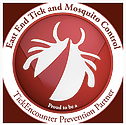
Ticks and mosquitoes are seasonal pests. Their quest for blood begins when temperatures reach above 50 degrees Fahrenheit, and increases in severity as temperatures and humidity continue to rise. If you’re a homeowner living in Eastern Long Island or the Hamptons, you may be seeing tick and mosquito activity now. Reduce your chances of being bitten and the health risks that are often associated with ticks and mosquitoes breeding and living in your
area with some helpful advice from our experts.
In this blog, you’ll discover which ticks and mosquitoes are most prevalent in your area, prevention tips for keeping yourself, your family, and your pets safe, and what you can do to reduce the tick and mosquito populations living on your property.
Top 3 ticks living in Eastern Long Island and the Hamptons
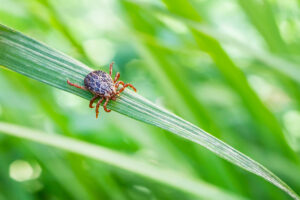
American dog tick
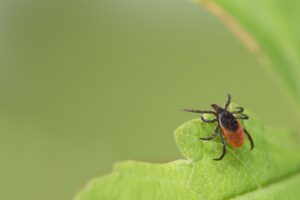
Black legged tick
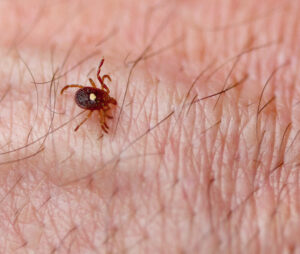
Lone star tick
- American dog tick (Dermacentor variabilis) – known for transmitting Rocky Mountain spotted fever.
- Black legged tick (Ixodes scapularis) / deer tick – known for transmitting Lyme disease.
- Lone star tick (Amblyomma americanum) – known for transmitting Southern Tick–Associated Rash Illness (STARI).
Tick safety tips for the entire family
- Wear a long-sleeved shirt and pants. If possible, tuck pant legs into socks or boots.
- Wear light-colored clothing to easily spot ticks crawling on you.
- Wear insect repellents with an EPA-registered active ingredient, such as 20-30% DEET. For an extra layer of protection, treat the exterior of your clothing, shoes, and any outdoor gear with spray containing permethrin.
- Avoid walking through tall grasses.
- Conduct a full body check for ticks and bathe/shower within 2 hours of your return.
- Tick checks are extremely important after outdoor activities. It’s essential to look closely too. Nymphs (young ticks) can be very tiny and easy to miss, and unfortunately are also the most likely to transmit Lyme disease. Tick nymphs may resemble a “walking freckle,” so stare at your arms and legs for a few minutes. Use a mirror to check your back and other areas of your body that are not readily visible.
- If you are bitten, remove and save the tick in a sandwich bag that zips, or a jar. Different tick species are associated with different disease-causing pathogens, and it may be useful to have the tick properly identified. Local health departments and extension services from universities often offer this service free of charge.
- Time is of the essence when it comes to removing ticks. Quick removal of ticks can reduce the likelihood of disease transmission.
- Talk to your vet about seasonal tick protection for your pets.
Tick prevention tips for your yard
-
- Keep walkways free from tall grass, shrubs, and vegetation.
- Trim lawn often, keeping it on the shorter side.
- Install a border of rocks to your landscaping to help deter ticks.
- Limit feeding wildlife that can bring ticks into your yard.
- Hire a licensed pest technician who can safely apply seasonal tick treatments to your yard, and who can also take care of other pests that may bring ticks into your yard.
Mosquito species to beware of in Eastern Long Island and the Hamptons
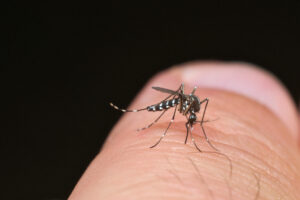
Asian tiger mosquito
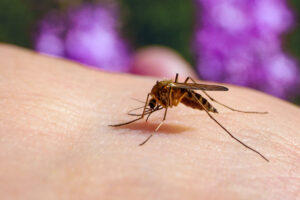
Northern house mosquito
-
-
- Aedes mosquito species (Ae. albopictus) the Asian tiger mosquito – carrier of Zika virus, dengue, and chikungunya virus; (Ae. sollicitans) the Eastern saltmarsh mosquito – carrier of Eastern equine encephalitis (EEE) and dog heartworm.
- Culex mosquito species (Cx. pipiens) the Northern house mosquito – carrier of West Nile virus and St. Louis encephalitis virus.
-
Mosquito safety tips for the entire family
-
-
- Wear light-colored clothing. Mosquitoes are attracted to darker colors. As an extra precaution, wear long socks. Aedes mosquitoes are ankle-biters.
- Add an extra layer of protection by wearing an EPA-approved insect repellent outside and reapply as directed. When pairing mosquito repellent with sunscreen, apply the sunscreen first.
- Avoid outdoor activities during peak feeding hours (dusk and dawn), although some species are active all day.
- Limit vigorous activities. The more active you are, the more carbon dioxide you emit, attracting hungry mosquitoes.
- Talk to your veterinarian about heartworm preventatives if you own a cat or dog. WARNING: Avoid applying any mosquito repellents containing DEET on your animal.
-
Mosquito prevention tips for your yard
-
-
- Eliminate standing water to help reduce populations around your property. Most mosquito species require less than a tablespoon of water for breeding.
- Change, drain, or remove water in objects such as small swimming pools, toys, bird baths, fountains, spare tires, flowerpots, and pet bowls.
- Keep roof gutters and downspouts clear of debris.
- Fill any tree holes that may collect water.
- Replace or repair broken screens to prevent mosquitoes and other pests from coming inside.
- Trim vegetation and grass to reduce resting areas for adult mosquitoes.
- Work with your pest management professional to treat mosquito hot spots.
-
Professional Help From Your Local Tick and Mosquito Control Experts
East End Tick and Mosquito Control is proud to provide our customers with over 25 years of extensive knowledge, servicing Long Island’s East End – from Moriches to Montauk, Wading River to Orient Point, and Shelter Island.
Our technicians are fully insured and licensed by the Department of Environmental Conservation. Don’t wait for mosquito and tick season to heat up, contact us online or call for a free estimate today! Southampton (631) 287-9700; East Hampton (631) 324-9700; Southold (631) 765-9700.
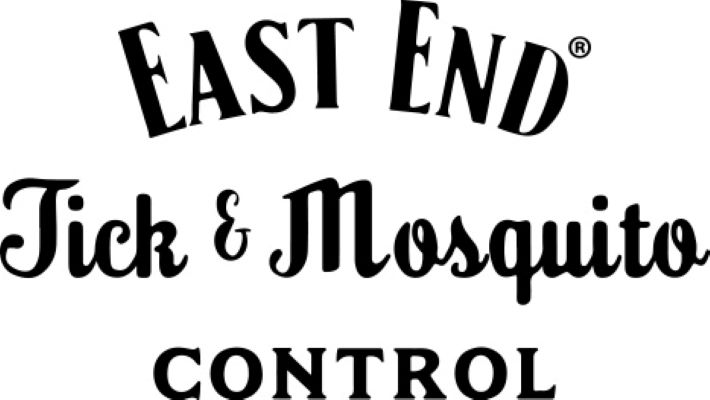
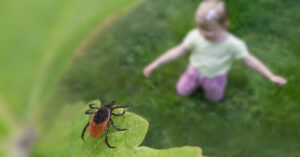 If you’re a parent, then your child’s health is a top priority. We want our children to be active and enjoy the good weather through the spring, summer, and fall. Unfortunately, while the warm weather may be inviting… the warmth also brings about some pests that can cause serious harm.
If you’re a parent, then your child’s health is a top priority. We want our children to be active and enjoy the good weather through the spring, summer, and fall. Unfortunately, while the warm weather may be inviting… the warmth also brings about some pests that can cause serious harm. For most people, a mosquito bite is only a minor nuisance. It itches for a day or two and then fades away. But for some individuals, a bite can cause more extreme symptoms. Leading them to wonder: Can you be allergic to mosquito bites?
For most people, a mosquito bite is only a minor nuisance. It itches for a day or two and then fades away. But for some individuals, a bite can cause more extreme symptoms. Leading them to wonder: Can you be allergic to mosquito bites? Spring is in the air. Which means it’s not only time to enjoy the warmer weather, but it’s also
Spring is in the air. Which means it’s not only time to enjoy the warmer weather, but it’s also  We hear comments like these frequently. Long Island residents tell us they’re seeing more mosquitoes, and that they’re encountering them both earlier and
We hear comments like these frequently. Long Island residents tell us they’re seeing more mosquitoes, and that they’re encountering them both earlier and 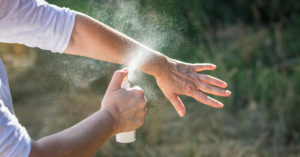 Late winter in Long Island can be unpredictable. Some days feel like we’re living in a deep freeze, and others seem like we skipped right over spring and fell headlong into summer.
Late winter in Long Island can be unpredictable. Some days feel like we’re living in a deep freeze, and others seem like we skipped right over spring and fell headlong into summer.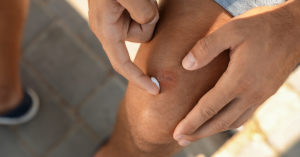 Where there are bugs, there will be bug bites and stings. With warmer weather right around the corner, we’ll soon see an increase in the number of bites, stings, and other less-than-pleasant human-bug encounters.
Where there are bugs, there will be bug bites and stings. With warmer weather right around the corner, we’ll soon see an increase in the number of bites, stings, and other less-than-pleasant human-bug encounters.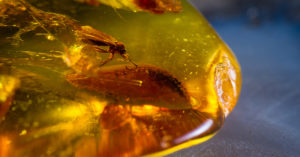 So began the explanation of how a drop of blood extracted from a
So began the explanation of how a drop of blood extracted from a  Winter typically isn’t prime time for ticks. Nearly all tick species are most active during the warmer months – April through September. Some even die off or become dormant when the weather cools. But there is one
Winter typically isn’t prime time for ticks. Nearly all tick species are most active during the warmer months – April through September. Some even die off or become dormant when the weather cools. But there is one 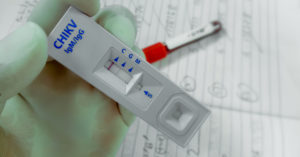 While the winter months can offer us a brief reprieve from some pests out in nature, it’s always short-lived. One of the biggest persistent pests on Long Island remains the mosquito, an insect that’s active most of the year from the spring going well into the fall. Not only do their bites cause itchiness and discomfort that can last days, but they also spread diseases.
While the winter months can offer us a brief reprieve from some pests out in nature, it’s always short-lived. One of the biggest persistent pests on Long Island remains the mosquito, an insect that’s active most of the year from the spring going well into the fall. Not only do their bites cause itchiness and discomfort that can last days, but they also spread diseases.